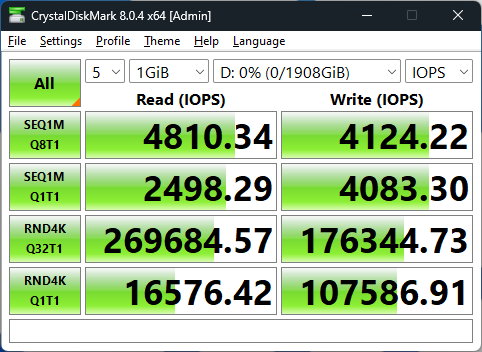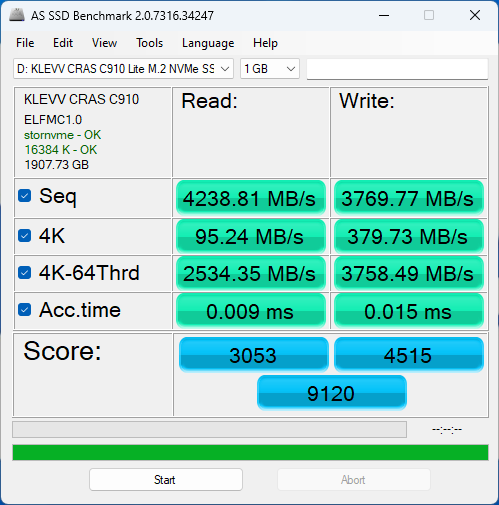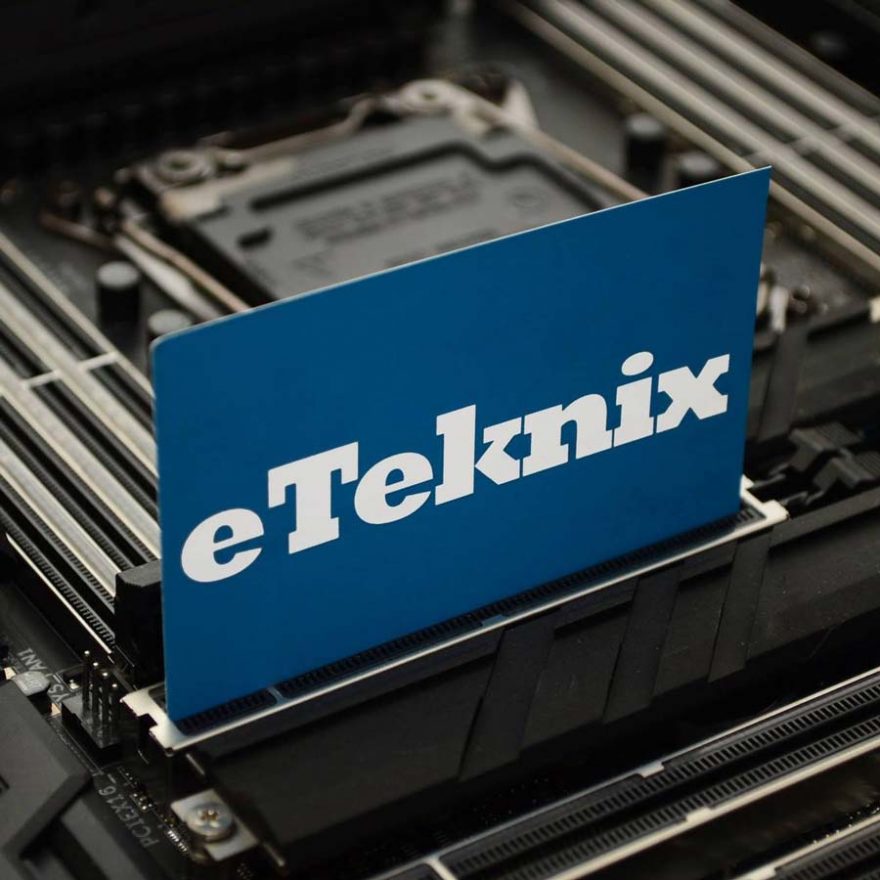KLEVV CRAS C910 Lite 2TB Gen 4 NVMe SSD Review
Peter Donnell / 1 year ago
This isn’t the fastest drive we’ve ever seen, but with performance rated to deliver up to 5000 MB/s read and 4200 MB/s write speeds, it’s exceeding that in our first benchmark, with 5044 MB/s and 4360 MB/s read and write respectively.
IOPS look similarly great, punching just a little bit above what we expected to see from the given specification, which is a good thing.
With a score of 22743, it’s also maxing out that rated speed in Anvil, and while we’ve seen similar drives push closer to 26,000 design, it will be somewhat slowed down by the DRAM-less design, but hey, it’s also much more affordable too, so it’s a fair trade-off.
This is great to see, as you can see the drive ramps up to near full speed very early, starting from around 32 KB files, and stays consistent up to 64 MB.
AS SSD usually comes in lower than CrystalDiskMark, but even with that in mind, these scores are still pretty strong with good sequential read and writes across the board, and fast access times too.
This may be a more affordable M.2 drive, but it’s still pretty fast, and easily 8-9x the performance of the older 2.5″ SATA SSDs we all used to aspire to.
Again, very consistent IOPS, and the same 9120 score we saw in previous runs while testing the read and write speeds.
When it comes to testing the read and write for large format and high-resolution videos, again, it’s an easy pass for this drive, having no issues keeping up with the demands of capturing 4K 10bit video.
Loading the latest games is easy enough, with fast repones times and read speeds, and move game speeds are about half the drive read/write which is consistent given we’re reading and writing to the same drive.
Compression looks good, with consistent read speeds and fast bursts of write when the CPU has finished unpacking each part of the compressed file.
Overall, this drive performed just above what was expected of it, and at the same time the temperature didn’t exceed 75c, so at no point did the drive enter a state of throttling to manage heat, meaning performance was consistent throughout.






























